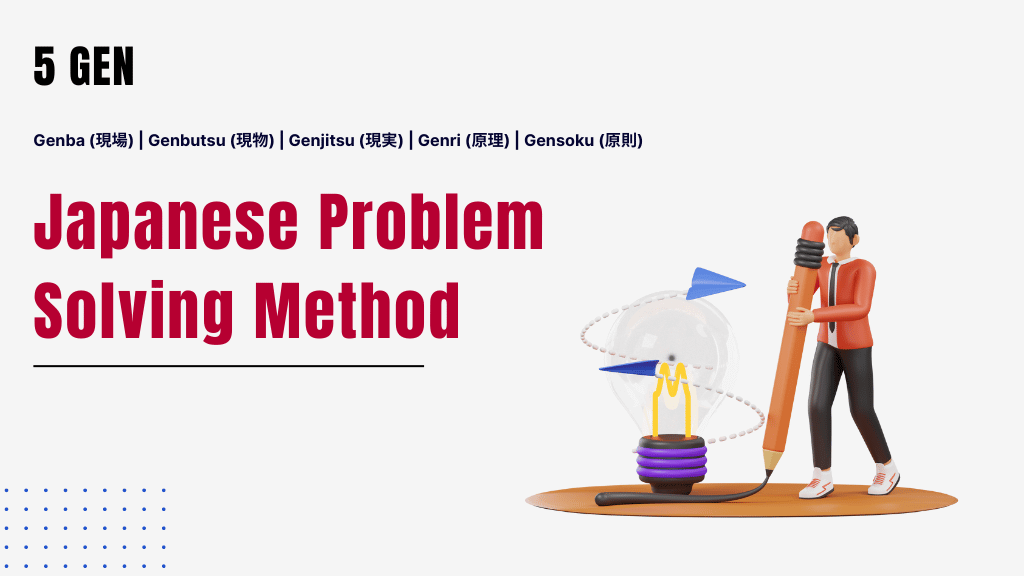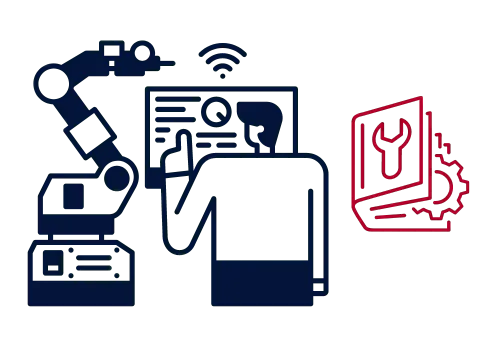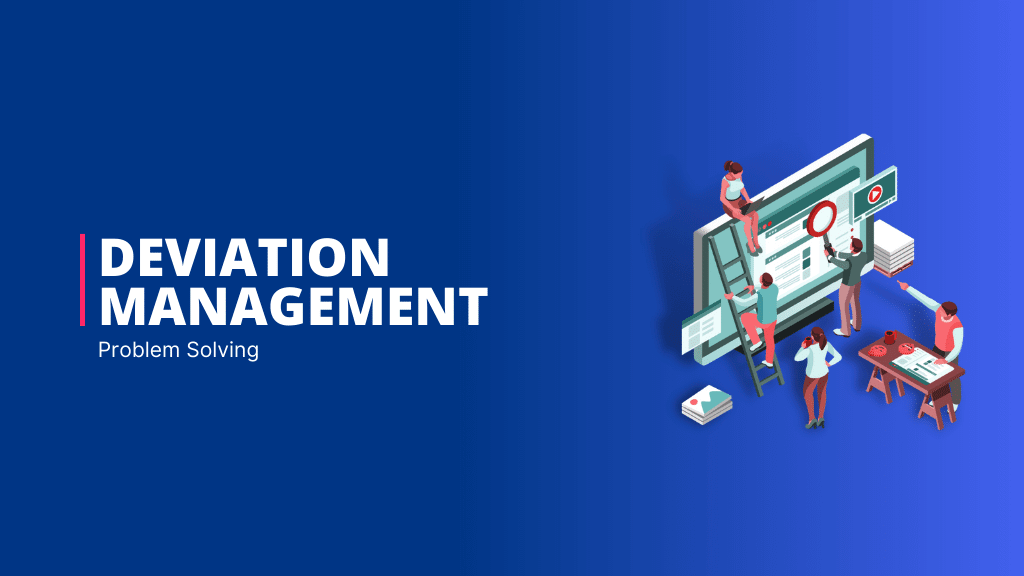To achieved manufacturing quality is such a challenging task. And it is very important for any business for success and sustainability. Therefore organizations are following the problem solving methodology like 5 Gen (or 5G) approach is the most robust method.
This 5 Gen (or 5G) problem solving method are rooted in japanese manufacturing techniques. This method focus on direct observation and evidence-based decision making approach, and this is what actually correct method of problem solving.
Here we will look into 5 Gen method , its topics and practical application of it with examples.

What is the 5 Gen Method?
5 Gen methodology is japanese prolem solving method, which focus on understanding actual situation through direct observation and data collection.
All 5 steps are starts from word “Gen” therefore it is a 5 Gen methodology.
The 5 Gen stands for:
- Genba (現場) – The Real Place
- Genbutsu (現物) – The Real Thing
- Genjitsu (現実) – The Real Facts
- Genri (原理) – The Fundamental Principles
- Gensoku (原則) – The Standard Procedures
Each “Gen” is important in problem solving process. All 5 Gen are focused on being present on the site, do observation of actual problem, understanding actual facts, get the root cause of problem, follow the fundamental prnciples and standard procedures.
The Five Gen’s in Detail
1. Genba (The Real Place)

Genba means to the actual place where our process happnes or the place were actual problem occurs.
Why actual place is because the you can understand the problem and solved fully by going to the place where the problem is.
Therefore it is a advised that don’t solved problem by sitting in the room and imagine. The managers and cross functional team who involved in problem solving should visit the shop floor or production line or the actual location to observed processes first.
Gemba Example: A manager and problem solving team noticed that there is a high defect produced in production line. They are not completely depends on reports, they visit production real production area and see the actual process. This helps them to find out the machine problem causing the defects.
2. Genbutsu (The Real Thing)

Gembutsu means to do the examination of actual product or the part with actual problem or issue. This steps involves inspection of parts to know the problem better.
As we do the cross check of actual product for the problem, which ensures that our decision will be based on evidences instead of assumptions.
Genbutsu Example: When manger visit production line, he inspect the defective products and find out that specific part is consistetly defective. And after analyzing the defective component, they found out the root cause and initiate corrective action.
3. Genjitsu (The Real Facts)

Genhitsu means collecting the real time data and facts of the problem. After data collection we can analyze the data.
This step involves verification of actual data and facts. This will benefit us to make conclusion on something based on accurate and relevant data.
Genjitsu Example: The manager visit production line, collect data of actual defect rate, machine parameters and production. Then by analyzing this all data, they found out that machine calibration or machine tool wear over time, causing the actual product failure.
4. Genri (The Fundamental Principles)

All processes and systems are works on some fundamental principles and theories. Therefore Genri means to follow those fundamental principles and theories.
So, understanding these principles helps to find out root cause, solve problems and impleent effective actions.
Genri Example: The manager revisi machine calibration and maintenance records and documents. This will helps to find out that current calibration method is outdated and not effective. Then new calibration method adoted to solve the problem on machine.
5. Gensoku (The Standard Procedures)

You are well aware about the SOP’s in manufacturing processes. The Gensoku is nothing but to follow and respect to standard operating procedures.
This makes sure that all actions and actiities are perform based on standard guidelines and which helps to maintain product output with best quality.
Gensoku Example: After indetifying the calibration issue in records, manager decides to update the standard operating procedure of machine calibration and maintenance. Later on it is advised to train the operators for new or updated operating procedure to prevent defects.
Applying the 5 Gen Method: A Practical Example
Let’s see the practical example in detail.

A manaufacturing company is suddenly facing a problem of increase in production defects.
The Quality team decides to solve this problem using 5 Gen method. Let’s see how they deal with this problem.
- Genba: The quality control team go to the production floor to observe the processes and identify any visible issues.
- Genbutsu: They have inspect the defective products and identify that a specific batch of raw materials is not good.
- Genjitsu: After analyzing data, it is reveals that the defects started after a new supplier selection. Next investigation ongoing..
- Genri: The team reviews supplier quality management audit and realizes that the new supplier’s raw materials do not meet our quality standards.
- Gensoku: The company updates its supplier selection procedures and defined the quality criteria to ensure all future materials meets required quality standard.
By following this amzing 5 Gen methodology among many problem solving methodology, every manufacturing company can find out root cause and implement effective solutions. This is defenetely improves product quality and customer satisfaction.
Benefits of the 5 Gen Method

- Improved Problem-Solving: Direct observation and data collection helps to do accurate problem identification and resolution.
- Enhanced Quality Control: Based on real fact and data companies can maitain high quality standards and consistency.
- Increased Efficiency
- Employee Engagement: Employees are involved in Genba activity and in problem-solving, which is a good culture of continuous improvement in organization.
Conclusion
The 5 Gen methodology is a powerful tool of problem-solving in manufacturing and other industries. By focusing on observation, real facts, and follow principles and procedures, it helps organizations identify root causes and implement effective solutions. 5 Gen approach helps in improvements in quality, efficiency, and overall company performance.






